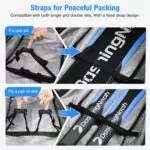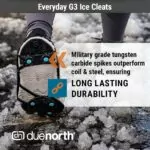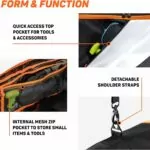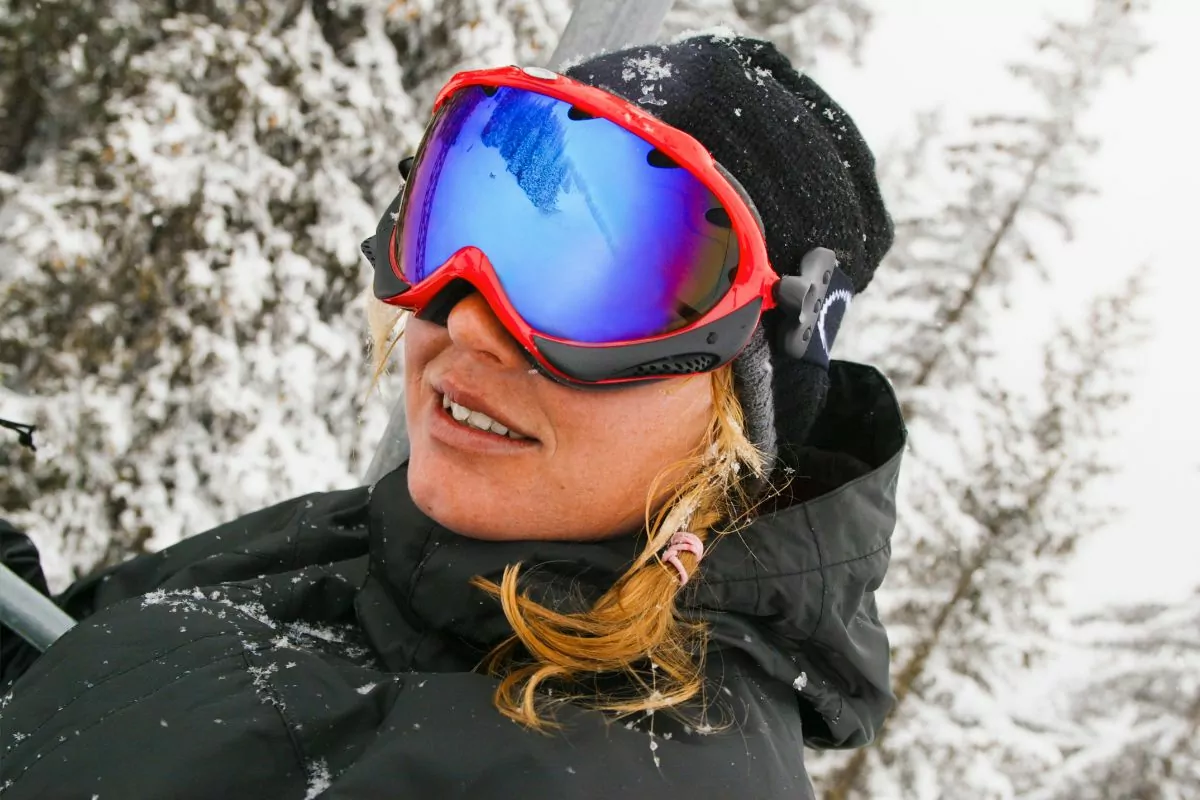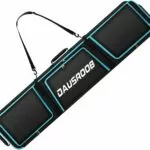Do you love speeding down the slopes with not a care in the world? Sounds delightful doesn’t it?
But going down the slopes at top speed without the proper gear can lead to a less than enjoyable experience and even an injury.
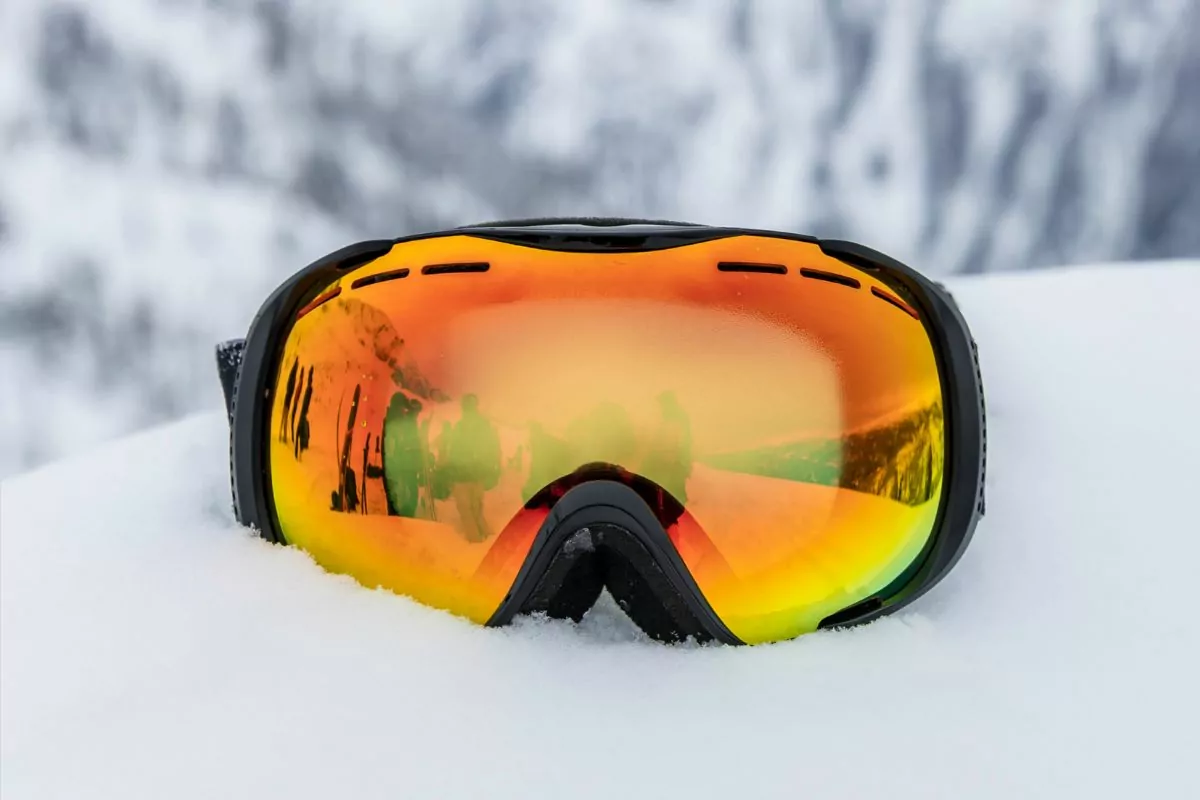
Your skis are not the only important thing to think about when skiing. Your goggles are just as essential. The air is thinner and filters fewer ultraviolet (UV) radiation at high elevations.
Snow reflects the sun with greater brightness and intensity. Wind can irritate your eyes and cause vision haze. When you’re falling through the woods, ice fragments, as well as twigs and branches, can get into your eyes.
In this article we explain what VLT is in ski goggles, how it helps you ski, and how to choose the best ski goggles!
What Is VLT In Ski Goggles?
VLT stands for Visible Light Transmission. This is how much light enters your eyes through the lenses you wear on your ski goggles.
While it may be cold up in the mountains, it is still easy for the sun to shine through the clouds and have intense light transmission. Meaning the level of VLT in your goggles is extremely important.
Because more light may pass through the lens, lighter lens tints have higher VLTs. On cloudy, overcast days, lenses that are yellow, gold, amber, green, or rose in color are all ideal options because they boost VLT.
Because less light travels through the lens when the tint is darker, the VLT is lower. Reduced VLT is a benefit of brown, gray, and copper lenses, which make them particularly effective on clear days.
Clear lenses are great for night skiing when there is minimal light transmission taking place.
How To Select The Best Ski Goggles
The VLT is not the only important aspect to your sky goggles. Below is a simple guide on how to select the best ski goggles for you.
If you are experiencing a level of uncomfortableness or even just irritations from your goggles when skiing, you may have the wrong ones. This guide can help you make the right choice and experience a smooth, comfortable, safe ride.
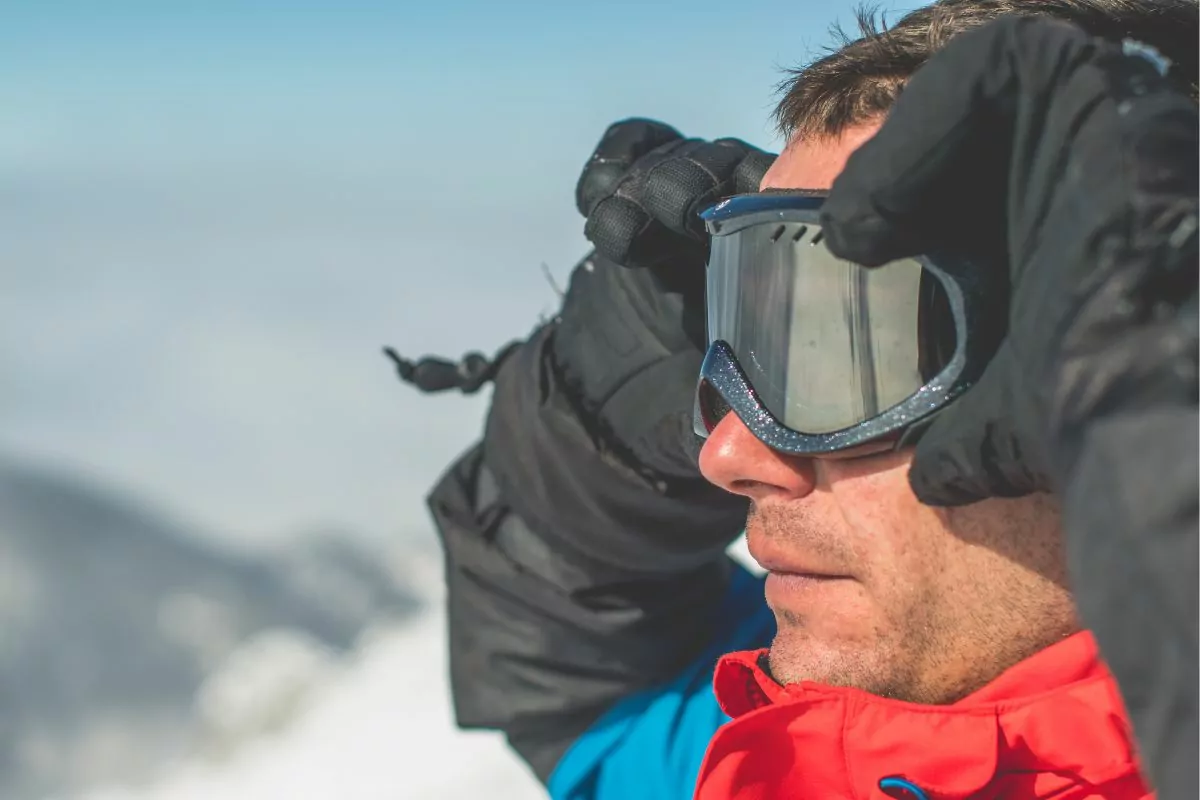
Lens Shape Of Ski Goggles
When shopping for ski goggles you will notice that the lens shape is either flat or curved. Both are excellent choices for skiing and are a personal preference to be considered .
Flat/Cylindrical Lenses
Although the lens surface is vertically flat, the lens surface slopes left to right across your eyes and face (between the nose and forehead).
Although cylindrical-lens goggles are less expensive and perfectly functional, their flatness can increase glare and somewhat impair peripheral vision.
Curved/ Spherical Lenses
This lens also curves vertically in addition to over your face and eyes. Curved spherical lenses are more expensive but offer superior peripheral vision, less distortion, and less glare.
Your peripheral vision gets better as the lens size increases.
Whether you prefer a flat lens or a curved lens is completely up to you. It is important to test out both lens shapes in order to find the perfect ski goggles for you.
Ventilation Of Ski Goggles
When warm air from your body heat meets cold air from the outside temperature, condensation can form and your vision is compromised. Goggles use a variety of approaches to avoid fogging. Including:
Vents
Vents is a traditional way of creating ventilation in ski goggles.
Small vents are created on the top, sides and bottom of the goggles, however, there is the downfall of feeling the wind on your face as you ski. Especially when skiing in extremely cold climates.
Anti-fog Coating
An anti-fog coating has been placed on the majority of mid-level to high-end ski goggle lenses to prevent fogging.
You can also purchase anti-fogging products separately to place onto lower end ski goggles. There may be some fogging but not nearly as much as there would be without.
Double-Layered Lenses
Double Layered Lenses are placed onto pretty much all ski goggles.
Once they are sealed properly they act like storm windows in creating a warm thermal barrier that prevents fogging as you ski.
Fans
A few premium goggles have tiny, battery-operated fans to assist moving moisture around. For riding the gondola, waiting in a lift line, and sliding down a hill, there are fans with various settings.
Fit Of Ski Goggles
Before you set off down the slopes, it is important to ensure that your goggles fit your face. They should be snug and comfortable, not tight and compressing.
They should also be flexible to adapt to the different temperatures. Other considerations are:
Strap Adjustments
Most goggles come with a single sliding buckle that allows you to adjust the fit. This is a great way to ensure your goggles remain comfortable.
Padding
As a result, your face won’t be pinched by the goggles. Your face should be cushioned by foam that is thick enough to prevent fogging, but not too thick to do so.
To improve ventilation, high-end eyewear may include two or three layers of thin cushioning.
Over The Glasses Fit
For those who wear prescription glasses, there are ski goggles which fit over those. This will allow for more room and prevent your glasses from pressing into your face.
Helmet Fit
No matter the style of ski goggles you choose, they need to be able to fit over your helmet and remain comfortable.
Final Thoughts
Overall, the ski goggles you wear are extremely important in your skiing experience. You want to ensure they are comfortable and have great ventilation.
The VLT of your goggles is also important. The Visible Light Transmission of your lens helps to protect your eyes from the sun, even at night time.
From lighter tinted lenses to clear lenses, we explain the impact they can have on protecting your sight from the blinding UV rays of the sun.
Make sure to select the correct goggles for you from the flat/curved lens to the color of the lens for VLT protection!
- How to Choose a Skim Board - September 10, 2023
- is Skim Boarding Hard? - February 8, 2023
- How To Wax a skim board - February 8, 2023


